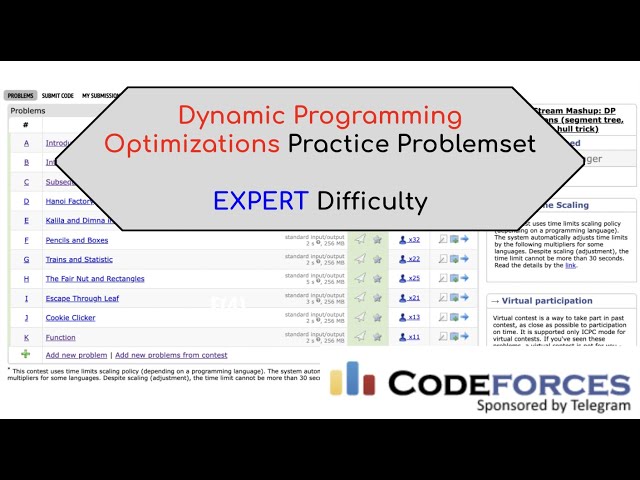
Unlocking Dynamic Programming Secrets: Essential Tips and Tricks
Understanding the Fundamentals
Dynamic programming is a powerful problem-solving technique that involves breaking down complex problems into simpler subproblems. To master dynamic programming, it’s essential to understand the fundamental concepts and principles that govern this approach. By grasping the basics, you’ll lay a solid foundation for tackling a wide range of computational challenges.
Identifying Optimal Substructure
At the heart of dynamic programming lies the concept of optimal substructure, which states that an optimal solution to a larger problem can be constructed from optimal solutions to its subproblems. Identifying these subproblems and understanding their relationships is crucial for devising efficient dynamic programming algorithms. By recognizing optimal substructure, you’ll be able to formulate effective strategies for solving complex problems.
Harnessing Memoization for Efficiency
Memoization is a key technique in dynamic programming that involves storing the results of expensive function calls and reusing them when the same inputs occur again. By memoizing solutions to subproblems, you can avoid redundant computations and significantly improve the efficiency of your algorithms. Learning how to harness memoization effectively will enhance your ability to tackle dynamic programming problems with ease.
Choosing the Right Approach: Top-Down vs. Bottom-Up
When implementing dynamic programming algorithms, you’ll often have to choose between top-down (recursive with memoization) and bottom-up (iterative) approaches. While both approaches can yield optimal solutions, their suitability depends on the problem at hand and your programming preferences. Understanding the strengths and weaknesses of each approach will help you make informed decisions and optimize your coding workflow.
Optimizing Space Complexity
Space complexity is a critical consideration in dynamic programming, especially for problems with large input sizes. While memoization can reduce time complexity by storing intermediate results, it may consume significant memory space. To optimize space complexity, you can explore techniques such as tabulation (bottom-up approach), which avoids storing redundant information and utilizes space more efficiently.
Handling Edge Cases and Boundary Conditions
In dynamic programming, handling edge cases and boundary conditions is essential for ensuring the correctness and robustness of your algorithms. Failing to account for edge cases can lead to incorrect results or runtime errors. By thoroughly analyzing problem constraints and defining appropriate base cases, you can prevent potential pitfalls and build robust solutions.
Striking the Balance Between Iterative and Recursive Solutions
Dynamic programming problems can often be solved using both iterative and recursive approaches. While recursive solutions may be more intuitive and easier to understand, they may suffer from stack overflow or exponential time complexity for certain inputs. Iterative solutions, on the other hand, offer better scalability and efficiency but may be more complex to implement. Striking the right balance between iterative and recursive approaches is essential for optimizing both time and space complexity.
Analyzing Time Complexity for Efficiency
Analyzing the time complexity of dynamic programming algorithms is crucial for assessing their efficiency and scalability. By understanding the recurrence relations and iteration counts involved in solving subproblems, you can estimate the overall time complexity of your algorithms. Additionally, identifying bottlenecks and optimizing critical sections can further improve the performance of your dynamic programming solutions.
Continuous Learning and Practice
Mastering dynamic programming is a journey that requires continuous learning and practice. By studying advanced techniques, exploring problem-solving strategies, and honing your coding skills, you can become proficient in tackling a wide range of computational challenges. Embrace the opportunity to learn from your mistakes, experiment with different approaches, and persistently strive for improvement. With dedication and perseverance, you’ll unlock the secrets of dynamic programming and elevate your coding prowess to new heights. Read more about dynamic programming tips and tricks
